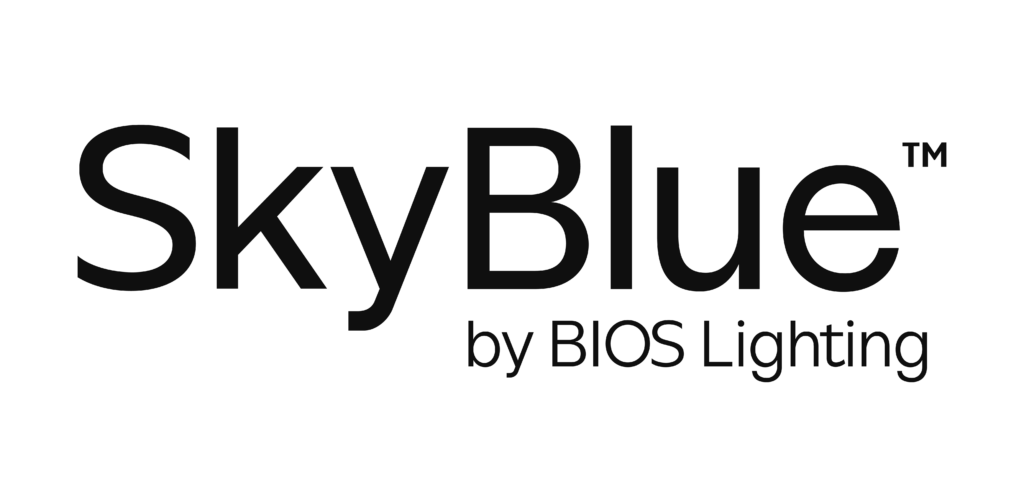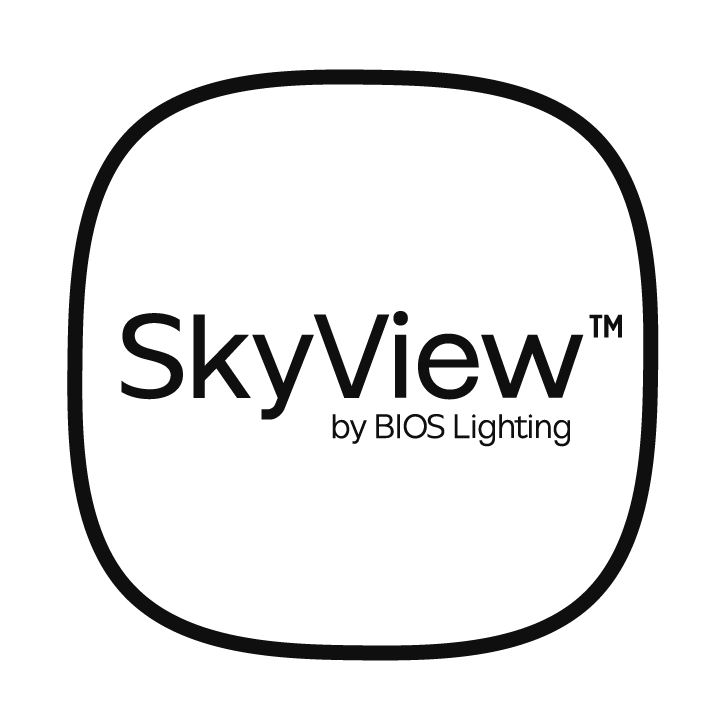We Evolved With Bright Days and Dark Nights
Human beings are masters of adaptation. In less than two centuries, we’ve transformed our way of life—from sending messages on horseback to carrying supercomputers in our pockets. Yet, for millions of years, our biology evolved under one constant influence: the sun.
Before Edison introduced the electric light bulb in 1882, our bodies were tightly synchronized to the natural rhythm of daylight and darkness. The sun’s rising and setting told our brain and body when to be active and when to sleep.

This relationship with light is rooted in our circadian rhythm—a 24-hour internal clock system that is regulated by blue-sky light signals perceived through the eyes. When you see the light of sun and sky your body should be awake and doing stuff; in the evening when that light is not present, your body should wind down and prepare for sleep. This master clock controls a wide array of biological functions at the cellular level, including sleep, mood, metabolism, immune response, and even medication efficacy. These rhythms evolved in tandem with the predictable cycle of bright days and dark nights found in nature.
However, the last two centuries have brought a dramatic shift. Today, most of us spend our lives indoors, often under electric light that lacks the necessary cues to support healthy circadian rhythms. Our bodies haven’t had time to adapt, and the result is a growing list of health challenges—from poor sleep and fatigue to mood disorders, inflammation and metabolic disruption.
What’s often overlooked is how much the type and timing of indoor light can influence our well-being. Given the bewildering diversity of lighting that is out there, what are their pros/cons and how do they compare in terms of “healthy” indoor light?
Choosing Healthy Lighting for Your Home or Office
Sunlight is the gold standard for human health, but relying on windows and skylights indoors has limitations. Factors like building orientation, weather, and window treatments restrict the amount and quality of light we receive. Plus, bringing in sunlight also introduces unwanted heat, glare, and UV exposure.
That’s where electric lighting comes in—not just for visibility, but for wellness. Ideal indoor lighting should deliver enough brightness to see clearly while also providing the right spectrum of blue-sky light during the day to support our circadian rhythms—without disrupting sleep at night. It should feel natural and be functional without overwhelming our spaces.
Studies show that the right lighting indoors can profoundly affect our mood, mental sharpness, energy, sleep, visual clarity, and even productivity. Human-centric lighting, which supports biological functions, is one of the simplest and most impactful health upgrades you can make at home or in the workplace.
So what lighting should I choose?
Incandescent Bulbs
Although being phased out, incandescent bulbs are the most traditional type of household lighting. They come in a range of color temperatures, from ‘cool white’ or ‘daylight’ that has more blue light to a ‘warm’ yellowish glow that many find visually comforting. They are inexpensive upfront and compatible with dimmer switches, making them a popular choice for ambient lighting. However, they are highly inefficient—wasting up to 90% of their energy as heat—and have a very short lifespan, typically lasting only 750 to 2,000 hours. From a health perspective, incandescent bulbs even cool white bulbs emit little blue-sky (melanopic) light, meaning they are not effective at supporting daytime circadian stimulation. While this low blue-light output may make them better for evening use, their inability to dynamically shift across the light spectrum makes them unsuitable for 24-hour circadian lighting needs.
Fluorescent Bulbs
Fluorescent bulbs are both energy efficient and long lasting. Compared to a conventional light bulb they use 25-30% less energy and last up to 9,000 hours longer, making them a great choice for the energy conscious. However, they come with drawbacks: many contain mercury, require careful disposal if broken, and can emit low levels of UV radiation, which may contribute to eye strain or damage. Some older models also produce distracting hums due to faulty ballasts.
Standard white fluorescent bulb color spectra are poor in blue-sky light and although bright enough, typically would not provide adequate healthy (melanopic) light to support your circadian health. Further, fluorescent bults are not designed to switch between daytime spectra and evening spectra, a requirement for truly healthy lighting.
CFL Bulbs
Compact fluorescent lamps (CFLs) are smaller versions of traditional fluorescents and fit into standard lamp fixtures. They’re energy-efficient, lasting up to 10 times longer than incandescents. Some newer CFLs have safety coatings to contain mercury in case of breakage. However, CFLs aren’t ideal for dimming, take time to reach full brightness (especially in the cold), and frequent on/off cycling can reduce their lifespan.
CFLs have the same limited healthy light spectra as their elongated cousins and lack tunability for day/evening use.
LED Bulbs
LEDs (light-emitting diodes) are the most efficient and longest-lasting lighting option, often reaching up to 50,000 hours or more. Though they carry a higher upfront cost, their energy savings and minimal maintenance pay off over time. Unlike other bulbs, LEDs can be tuned to emit specific wavelengths, giving you more control over color and brightness to support activities like work, relaxation, or winding down before bed. This makes them particularly useful for managing circadian health—if designed correctly.
‘Full Spectrum’ Bulbs
Often marketed as mimicking natural daylight, full-spectrum bulbs—whether fluorescent or LED—offer a wider color range than standard bulbs. However, somewhat improved, they often still lack sufficient melanopic (sky-blue) light needed to properly stimulate the brain’s circadian centers. This means they may improve color rendering or create “mood lighting” but fall short in providing the biological benefits of true circadian lighting.
Circadian Lighting
Circadian lighting aims to deliver the right light at the right time—strong sky-blue light during the day to stimulate alertness, and low or no blue light at night to support sleep. Most conventional lighting underperforms in both areas: it provides too little melanopic light during the day and too much at night. Unfortunately, many so-called “circadian” systems on the market merely shift color temperatures throughout the day without actually adjusting their biological impact. These are often just mood lights with limited physiological benefit.
BIOS Healthy Light Solutions
Fortunately, science-backed circadian lighting is now available. BIOS Lighting offers truly biologically effective solutions, including SkyBlue™ integrated lighting and SkyView™ lamps and tile, which use patented circadian technology derived from NASA space station research.
The lighting can have daytime and nighttime modes to support your body’s internal clock, promoting alertness when you need it and rest when it’s time to wind down. It can be integrated into existing fixtures, used as a one-to-one replacement of standard 2×2 troffer lighting, in table lamp, or hanging pendant.
With BIOS, you don’t have to choose between beautiful lighting and biological wellness—you can have both.
Do I Really Need Circadian Lighting?
Most Americans spend too much time inside (>90% of your life)- due to in large part to our protective homes and office-based workplaces. In the interim, our health suffers due to our lack of sunlight exposure and our overexposure to inappropriate lighting. These effects are exponential and touch every facet of our life.
Blue Light at night (BLAN or ALAN) is almost as disruptive to your circadian rhythm as inadequate daytime blue sky light. Standard lighting and screens provide too much blue light at night. True circadian lighting can help biologically brighten your days while darkening your nights.
Adapting your environment’s lighting to improve your overall health is by far one of the easiest and most effective ways to optimize your life and health. Whether you’re struggling with falling asleep, morning grogginess, eye strain, mental fatigue, stress, productivity, or maintaining a normal sleep cycle, you stand to benefit massively from the seemingly minor change of installing healthy in-home or in-office lighting.
Healthy Lighting FAQs
What type of light is best for your overall health?
Light which mimics the sun is best for your overall health as it governs our circadian rhythm and thus a multitude of our biological processes; in a word, any light that can approximate bright days and dark nights.
What type of light has negative effects on health?
Blue light at night (BLAN) is commonly produced by our phone, computer, and TV screens. It can cause a litany of problems, including eye strain, poor sleep, headaches, and disruption to our circadian rhythm. In contrast, lack of blue light during the day can have similar effects.
Does “full spectrum” mean a light is good for you?
Full spectrum is a marketing term that can be used to describe any light. It does not guarantee any health benefit. BIOS SkyView™ lighting is spectrally optimized to provide benefits for both day and night.
What does a lightbox do?
Light boxes historically have been used for short term light therapy, mainly for Seasonal Affective Disorder (SAD) or the winter blues. They produce intense light close to the face and are not designed for continuous use.
What are the dangers of certain light exposure?
Over-stimulating light (such as blue light) at night can disrupt melatonin hormone production that can make it hard to fall asleep short term and can compromise your circadian rhythms. Under-stimulating light during the day can compromise circadian rhythms as well, making it difficult to perform.





